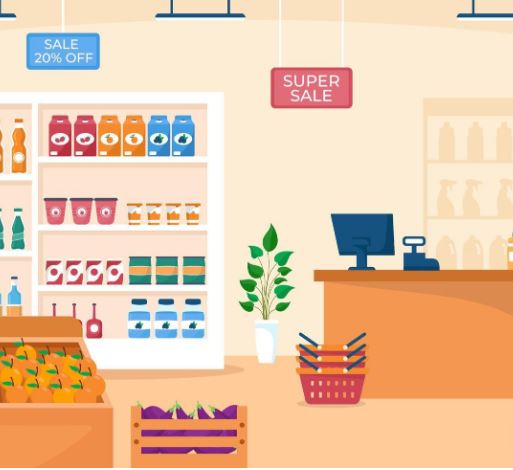In the quest to enhance point of sale performance, visibility is just one part of the picture. To assess and improve business performance, it’s essential to focus on specific and measurable Key Performance Indicators (KPIs). In this article, we’ll explore crucial KPIs for optimizing point of sale performance and how they can help maximize sales and business success.
How can KPIs help assess business performance?
Choosing specific, measurable, and timely KPIs provides us with agile analysis and allows us to make informed decisions to improve point of sale performance. These indicators offer a clear view of key aspects such as managing the 3Ps (price, promotion, and positioning), product visibility, and availability on the shelf.
The Importance of KPIs in Point of Sale
KPIs are fundamental tools that provide an objective and quantifiable view of business performance at the point of sale. From price management to product availability on the shelf, these indicators enable companies to assess their performance and take steps to improve operational efficiency and increase sales.

Key Areas to Focus on at the Point of Sale
Managing the 3Ps: Prices, Promotions, and Positioning
In the context of the point of sale, closely monitoring our pricing, promotions, and positioning strategy on the shelf is essential. We evaluate how these factors influence consumer behavior and ensure that the retailer complies with agreed prices.
Pricing Strategy Monitoring
Pricing strategy is a key component of the marketing mix that directly influences consumer behavior and business profitability. Beyond simply setting prices, it’s crucial to analyze how these prices impact demand, perceived product value, and competitiveness in the market.
Evaluating Promotion Performance
Promotions are a powerful tool for driving sales and fostering customer loyalty, but their effectiveness must be constantly evaluated and optimized. It’s important to measure the return on investment of promotions, as well as their impact on consumer behavior and overall business profitability.
Analysis of Shelf Positioning
Shelf positioning plays a crucial role in consumer visibility and choice. Shelf height, product placement, and proximity to other items can influence sales and brand perception. It’s essential to analyze how shelf positioning affects product performance and adjust strategies accordingly.
Shelf KPIs: Beyond Visibility
Share of Shelf (SOS): More Than Shelf Space
This indicator reveals the percentage of space our product occupies on the shelf in a specific point of sale. High SOS influences consumer perception and choice, making it crucial to monitor shelf presence and the number of facings on each shelf.
Share of Shelf (SOS) is an indicator that goes beyond simple product visibility on the shelf. It not only measures the physical space occupied by the product but also its relative presence compared to the competition. A high SOS indicates a dominant position in the market and can significantly influence consumer choice.
Analysis of Product Distribution and Placement
In addition to the amount of space occupied, it’s important to analyze product distribution and placement on the shelf. Strategic location, visual organization, and proper presentation can improve product visibility and appeal, resulting in increased sales and a better customer experience.
On Shelf Availability (OSA) and Out of Stock (OOS): Ensuring Product Availability
On Shelf Availability (OSA) and Out of Stock (OOS) are key indicators that assess product availability on the shelf. OSA measures the proportion of time a product is available on the shelf, while OOS indicates the percentage of products that are out of stock or absent from the point of sale. Both indicators are essential to ensure a positive shopping experience and maximize sales.
On Shelf Availability (OSA)
It evaluates product availability on the shelf rather than measuring the space occupied. It’s essential to ensure that the product is always available on the shelf to avoid sales losses due to stockouts.
Out of Stock (OOS)
Determines the percentage of products that are out of stock at the point of sale. Consistent product availability is crucial to meet customer needs and maintain high sales levels.
Strategies to Improve Product Availability
To improve product availability, it’s important to implement effective inventory and logistics management strategies. This includes optimizing replenishment processes, real-time stock monitoring, and close collaboration with suppliers and retailers to prevent stockouts.
Conclusion: Integrating KPIs into Business Strategy
Precise measurement of these KPIs at the point of sale is essential to optimize performance and maximize sales. At SIG Spain, we integrate these indicators into our monitoring routines to ensure effective and consistent market presence. With us, your brand will achieve success through strategic implementation and continuous measurement of these KPIs.
In conclusion, KPIs are powerful tools that provide a holistic view of performance at the point of sale and guide companies’ strategic decisions. From price management to product availability on the shelf, these indicators enable companies to identify areas for improvement and maximize success in an increasingly competitive market.
Frequently Asked Questions
KPIs are Key Performance Indicators that allow us to evaluate and measure our business’s performance. They are important at the point of sale because they provide relevant information for making strategic decisions and improving operational efficiency.
It’s important to select KPIs that are aligned with your business goals and strategies. They should be specific, measurable, achievable, relevant, and timely (SMART) to ensure effective performance evaluation.
There are various tools and tracking systems that can help you measure and analyze KPIs at the point of sale, such as inventory management software, sales tracking systems, and customer satisfaction surveys.
Evaluating performance at the point of sale is crucial for identifying areas for improvement and making strategic decisions to drive sales and business profitability. KPIs provide an objective and quantifiable view of business performance, allowing companies to optimize their operations and maximize success in the market.
To improve product availability on the shelf, it’s important to implement effective inventory and logistics management strategies. This includes optimizing replenishment processes, real-time stock monitoring, and close collaboration with suppliers and retailers to prevent stockouts.
Share of Shelf (SOS) measures the percentage of space occupied by a product on the shelf in a specific point of sale, while On Shelf Availability (OSA) evaluates product availability on the shelf rather than measuring the space occupied. Both indicators are important to ensure effective and consistent product presence at the point of sale.










